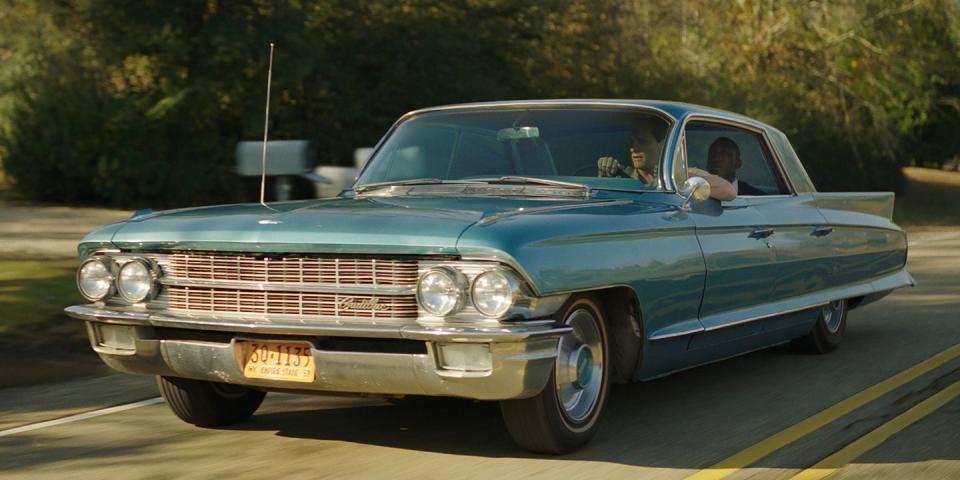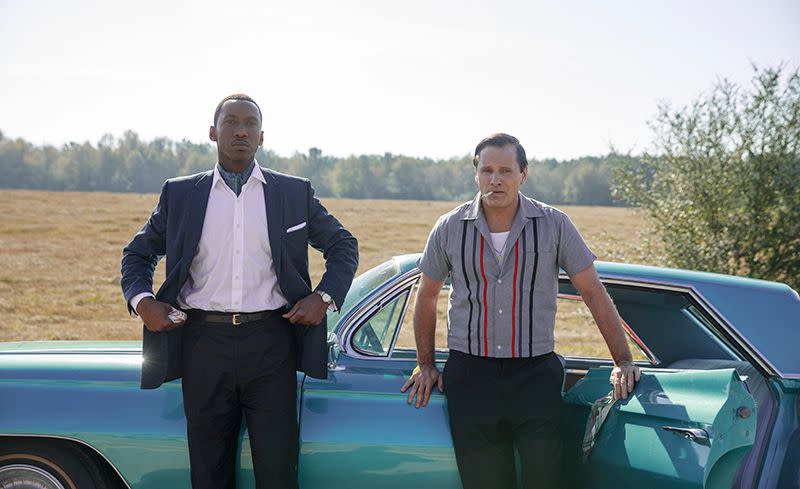Green Book's Turquoise Star Car

Green Book is running at 81 percent positive on Rotten Tomatoes, there's talk of Oscar nominations for Viggo Mortenson and Mahershala Ali, and box-office expectations are high. But what matters to us here is the turquoise 1962 Cadillac Sedan DeVille that transports the stars through the segregated American South during the early 1960s.
Mortensen plays chauffeur Tony Vallelonga, hired to drive pianist Don Shirley (Ali) on tour, so much of the film takes place within the confines of the car as the pair deal with racial discrimination and develop a friendship along the way. The movie draws its title from The Negro Motorist Green Book, a travel guide published from 1936 to 1967. As with many a period road film, it required a lot of vintage iron.
"We had many a day when we had 35 to 45 cars on set per day," explains Jeff Hess whose New Orleans–based company, Dirty White Boy Picture Cars, supplied background vehicles to the production. Hess himself would be one of the primary wrenches maintaining the three 56-year-old Caddies that portray the primary setting of the film.

"I think they wanted a coupe," Hess says about the Cadillacs. "But since Ali rides in the back seat, that's not cool. And he's a big guy, so it would be hard to do it. And you're putting cameras in there, and a two-door is not the car you want to do that."
While Green Book is being released by Universal, it was an independent production based in Louisiana, and spending wasn't lavish. "A car that old, even if it's original, it still needs to be gone through," explains Hess. "We had to put wiper motors in all of them. We even had spare wiper motors, because once you see the movie you'll see it's a lot of rain and a lot of snow."
Mechanically, all three of the DeVilles were stock-including their original 390-cubic-inch (6.4 liter), all iron, still carbureted V-8 engines. Originally rated at 325 horsepower (SAE gross), they may have been making less after nearly six decades of seasoning. Two of the cars had to run well for filming, while the cosmetically identical third car was used on stage for static filming. "The hero car, we had the intake off," Hess relates. "We put lifters and that type of thing in it. We just do what we need to do. We put in new coil springs and new shocks.

"We got the cars from another picture-car guy I deal with on a daily basis," Hess recalls. "We rented them. We painted them and we put interiors in them. Actually, we rented two and purchased one because it was going to go on the stage. The grips put so much on that car, it collapsed the coil springs and caved the roof in. It did extensive outside damage."
The interiors of all three cars were reupholstered to match. "We had a guy here locally," Hess says; "they picked the color and he did them. The color in that car is not a factory color. It's close, but they wanted a specific color for the camera.
"Originally, we were going to film here in New Orleans first and then go to New York City," Hess says explaining the interior's color. "But the production flipped that around to shoot the fall leaves up there. The interiors weren't done yet. So I went to Target and got some blue bed sheets to cover the seats. They approved the colors, so when we got back we took those bed sheets to the upholstery guy and told him to get as close to this as you can get. That's how all that transpired, but we wanted something close to the factory colors."
As for the hero car? "They drove the crap out of it," Hess concludes.
('You Might Also Like',)

 Yahoo Autos
Yahoo Autos 